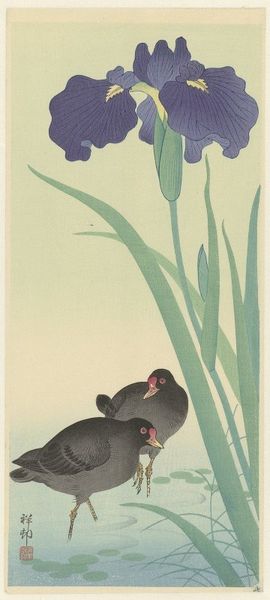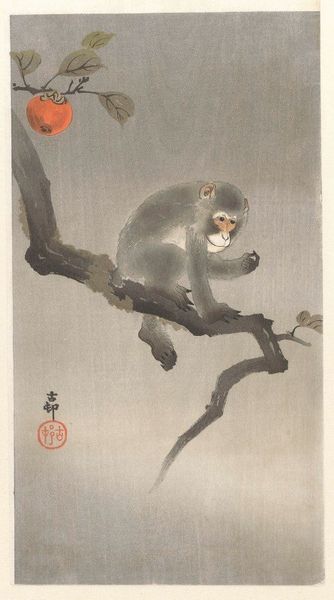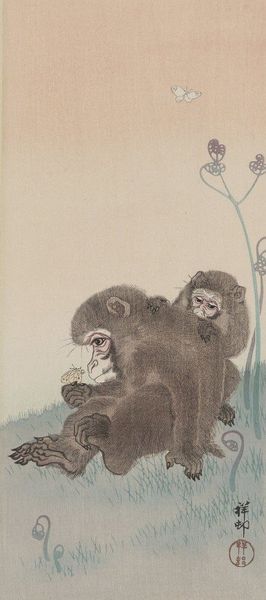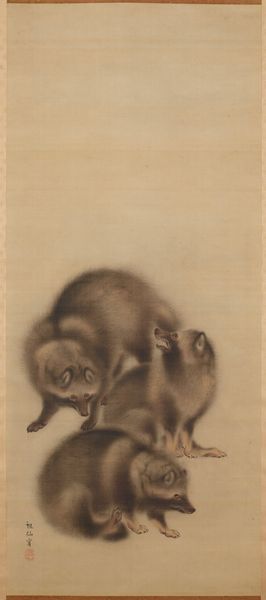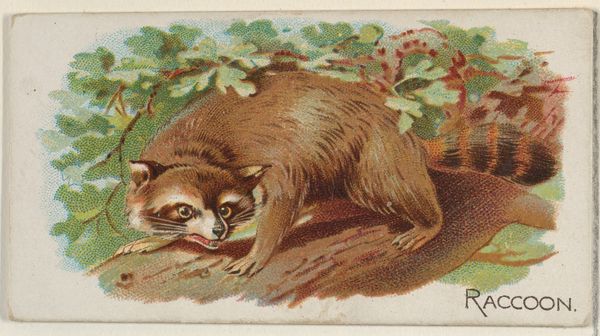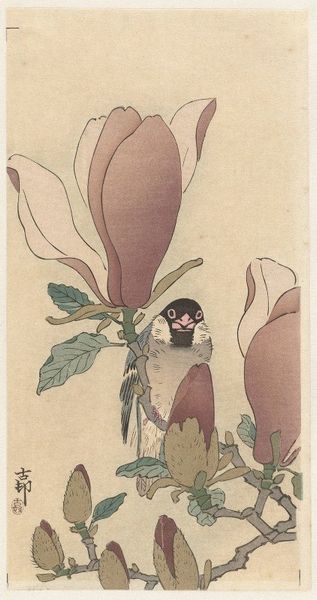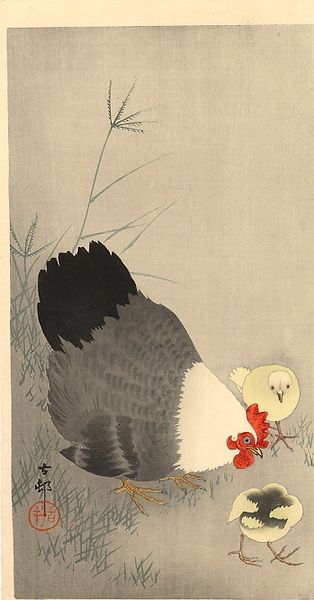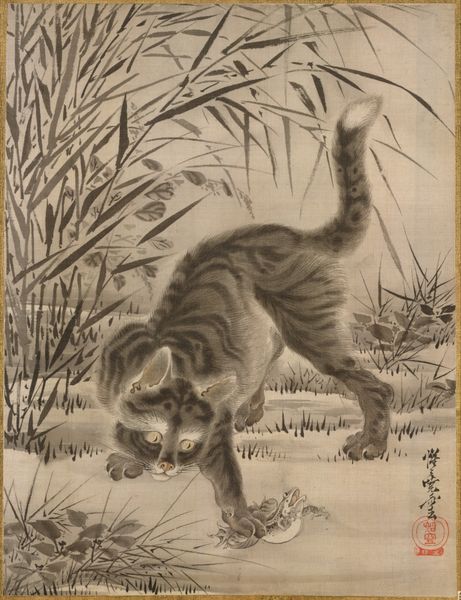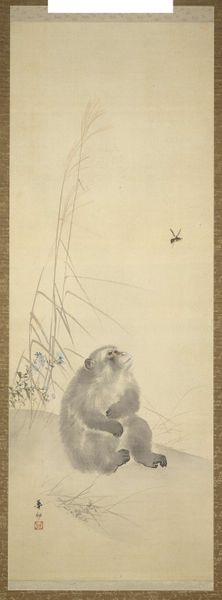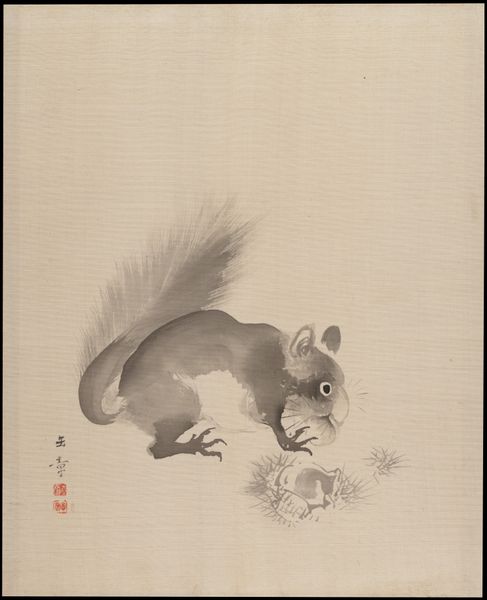
Copyright: Public Domain: Artvee
Curator: Ohara Koson’s “Monkey with Insect,” created sometime between 1900 and 1930, immediately strikes one as quietly captivating. Editor: There's something melancholic about it, actually. The muted tones, the monkey’s almost contemplative expression as it holds that insect… it speaks of impermanence. Curator: Yes, it's executed in woodblock print, a medium intimately tied to the traditions of Ukiyo-e. Looking at the textures and the fine lines depicting the fur and foliage, one appreciates the artisanal skill and labor that go into the production of these prints. Editor: The placement of the figure—a grey macaque set against wispy blades of grass—raises so many questions about the historical relationship between humans and nature. Is this a portrait of primate contemplation? Or does the insect symbolize something deeper about the natural hierarchy? Curator: Perhaps both! Koson was known for his kacho-e prints – images of birds and flowers – but this adds an unusual figuration. Consider the accessibility and consumer demand driving the market for such prints during that era; this piece exists within a nexus of commercial and artistic choices. The artist consciously employing traditional methods for mass appeal. Editor: I can't help but wonder how the print might resonate with audiences back then versus viewers today, as ideas surrounding colonial influence shifted drastically during the late Meiji and early Taisho periods in Japan. The gaze towards wildlife becomes less objective, tinged with romantic longing perhaps? Curator: Interesting thought. I’m curious, as an object made through careful processes, does our consumption of art allow room to appreciate labor conditions that formed it? Is such production ethically sound to modern audiences? Editor: I think situating it intersectionally encourages critical engagement. Looking closely we see so much historical entanglement that provokes meaningful present-day engagement. It's much more than simply decoration, no? Curator: Certainly not merely decoration. More like…a carefully constructed moment in time, reproduced to offer a slice of observation. Editor: Indeed, observation laden with implicit narrative—narrative about our relationships and perceptions constantly changing throughout time.
Comments
No comments
Be the first to comment and join the conversation on the ultimate creative platform.
